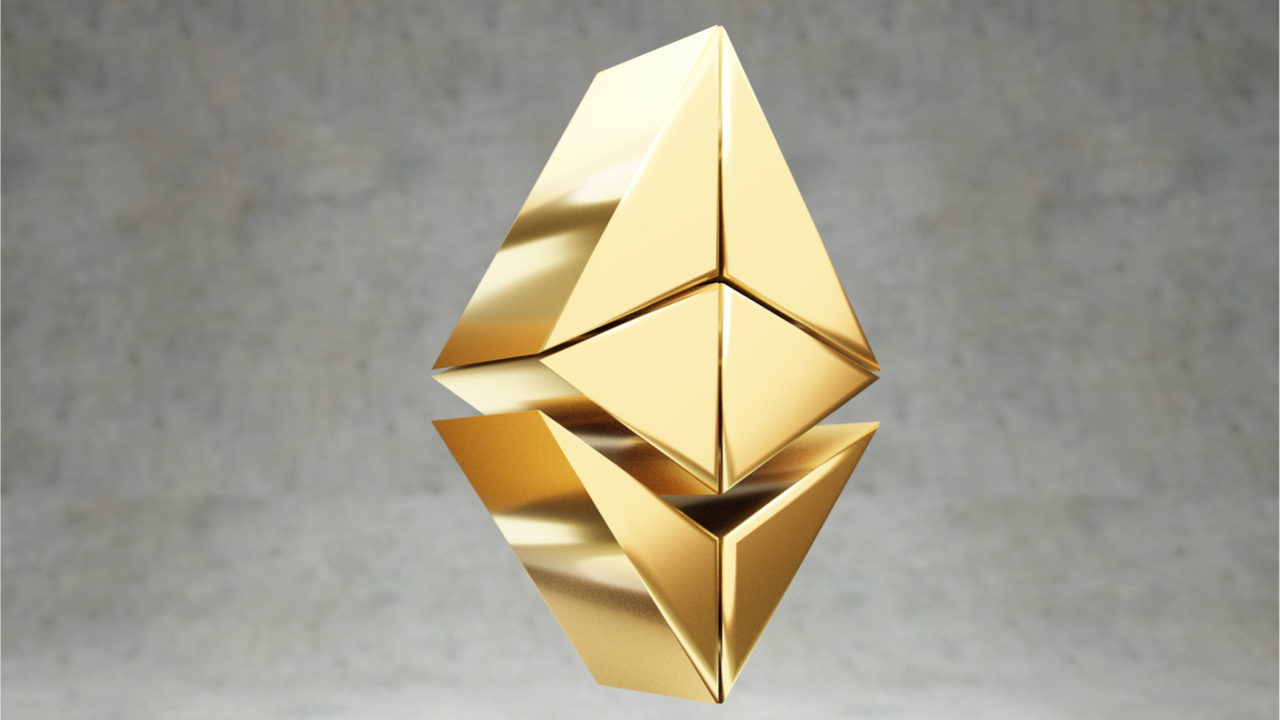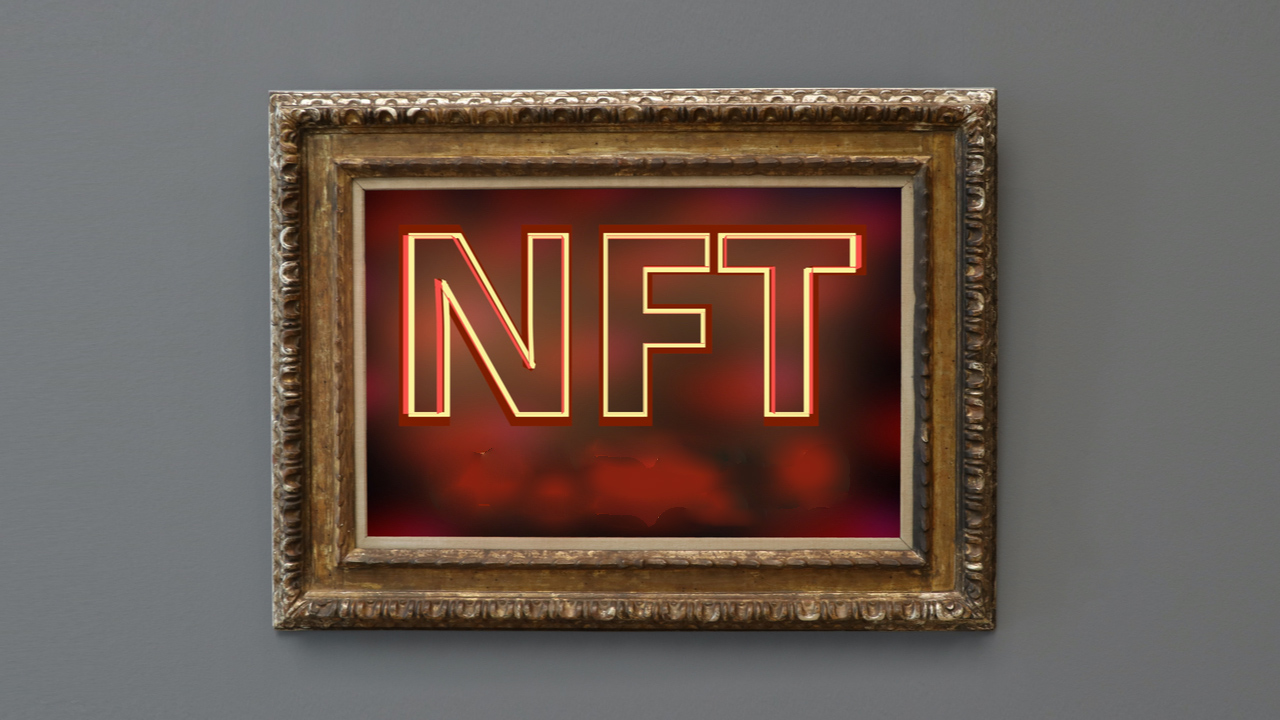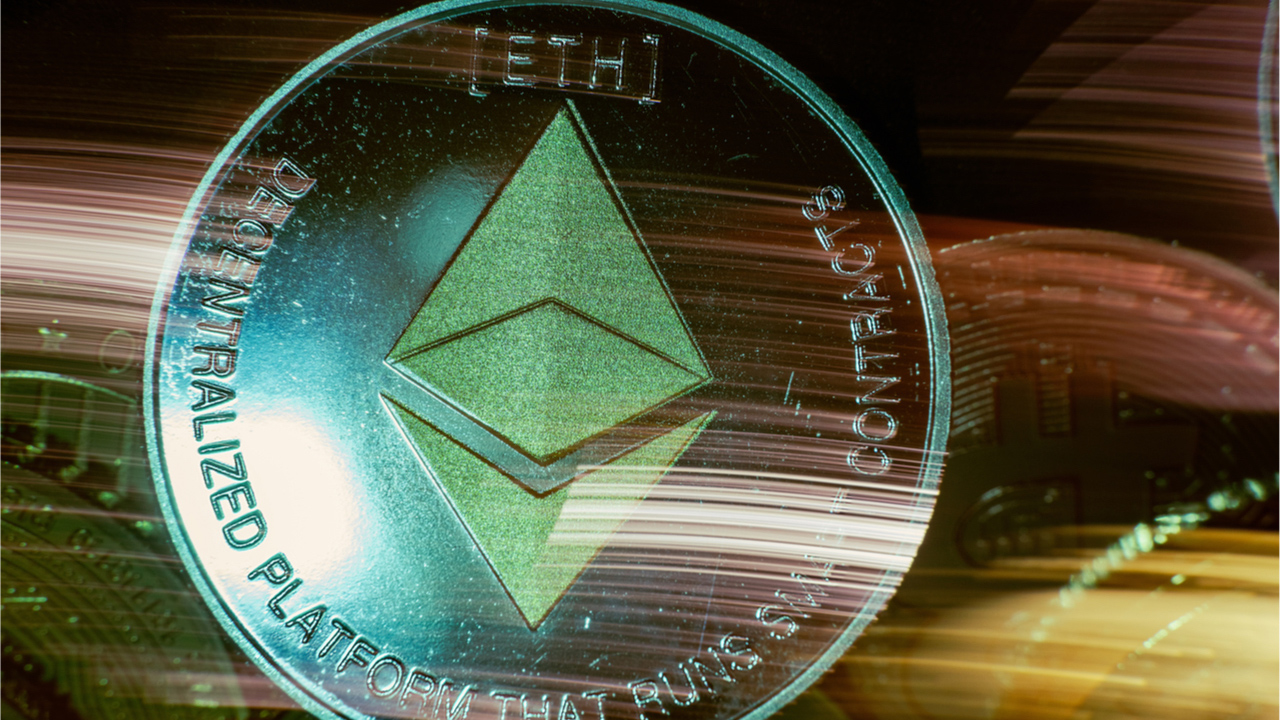 111 days ago, the Ethereum network implemented the London hard fork upgrade which added a mechanism (EIP-1559) that changed Ethereum’s fee rate to a new scheme that makes the crypto asset ether deflationary. Since then 1 million ether has been burned or the equivalent of around $3.8 billion worth of ethereum using today’s exchange rates. […]
111 days ago, the Ethereum network implemented the London hard fork upgrade which added a mechanism (EIP-1559) that changed Ethereum’s fee rate to a new scheme that makes the crypto asset ether deflationary. Since then 1 million ether has been burned or the equivalent of around $3.8 billion worth of ethereum using today’s exchange rates. […] Users of Russia’s central bank digital currency are going to pay a fee for each transaction, a high-ranking representative of Bank of Russia has recently announced. The digital ruble charge, however, is not going to exceed those currently applied to fast payments in the country. Bank of Russia to Charge for Digital Ruble Transfers The […]
Users of Russia’s central bank digital currency are going to pay a fee for each transaction, a high-ranking representative of Bank of Russia has recently announced. The digital ruble charge, however, is not going to exceed those currently applied to fast payments in the country. Bank of Russia to Charge for Digital Ruble Transfers The […]
Solana has grown nearly 13,000% year-to-date and while adoption has been increasing, there may be more than meets the eye.
The top cryptocurrencies by market capitalization keep changing over time as the industry matures. Solana (SOL) has seen its value skyrocket so far this year and has been consistently processing over 2,500 transactions per second.
The cryptocurrency’s price, according to TradingView data, is up nearly 13,000% year-to-date as the year started with SOL trading slightly below $2. Solana is now changing hands-on exchanges for around $240.

Solana is a blockchain platform that aims to achieve high transaction speeds at a low cost without sacrificing decentralization. To do so, it relies on a number of unique features, including a “proof-of-history” mechanism. This allows Solana to process an estimated 50,000 transactions per second, compared to Bitcoin’s seven and Ethereum’s 15.
As the Solana network supports smart contracts, decentralized finance (DeFi) applications have found a home on it. Its ecosystem now has nearly $15 billion worth of crypto assets locked on it, according to DeFiLlama data.
Speaking to Cointelegraph, Kraken Intelligence manager Pete Humiston noted that almost all crypto assets have benefitted from a year-long bull run, although Solana has seen “particularly strong price appreciation due to its Web 3.0 experience.”
Humiston added that transactions on Solana are “instant, cost a fraction of a penny and the ecosystem is easy to navigate thanks to user-friendly wallets and applications” contributing to its adoption.
Solana’s adoption may be the result of retail investor demand that was priced out of Ethereum, according to Mindaugas Butkus, chief technology officer of Solana-based decentralized exchange Solanax. He told Cointelegraph:
“Growing demand for DeFi applications and NFTs on Ethereum led to exploding gas fees, which made it expensive to use ETH. Transacting on Solana is inexpensive and transactions are processed in no time, making it an attractive alternative for retail investors.”
Butkus added that Solana’s base-level protocols attracted users for the same reason Ethereum’s DeFi space initially did: flourishing innovation leading to a booming ecosystem with a good user experience.
As the price of Solana surged, many speculators suggested that SOL will one day overtake Ether (ETH) to become the second-largest cryptocurrency by market capitalization. Solana’s focus on maintaining its decentralization while offering near-instant transactions at a low cost has been a way to attract users, but there’s more to Ethereum than gas fees.
Speaking to Cointelegraph, Adrian Kolody, founder of Domination Finance — a non-custodial exchange focusing on dominance pairs — said he believes there are “too many users vested in Ethereum” for it to be surpassed by Solana.
To Kolody, Ethereum is “a truly decentralized network whereas Solana falls more into the SpeedFi category.” To him, there are idealists that refuse to interact with any ecosystem that isn’t that of Ethereum:
“Ethereum would have to totally bottle their promises for Ethereum 2.0 over the coming years for Solana to overtake it, and even if that happens, it is still very unlikely."
To Kraken Intelligence’s Humiston, it’s in the “realms of possibility that Solana could trade inline with Ethereum this cycle if it maintains momentum and grows its developer and user community.”
Humiston added that Ethereum has a “number of tailwinds of its own” that could justify its price moving up further this cycle. To the analyst, this potential price appreciation is “why diversification among the largest smart contract platforms” is worth considering at this point.
Markus Bopp, chief technology officer of no-code nonfungible token (NFT) platform Unifty, told Cointelegraph that he believes Solana has “great potential technically,” and as it matures and developers organically jump onto its network it “could be a good #3.”
Bopp added that “this will take years moving forward,” and right now it’s “a lot easier as a developer to jump on EVMs due to much lower barriers to entry,” concluding:
“Having said that, Ethereum just can't compete with the speed of transactions on Solana which developers may increasingly look at.”
Jack McDonald, CEO of digital asset custodian Standard Custody & Trust Company, told Cointelegraph that Ethereum will “always have a prominent place in terms of market cap” thanks to its first-mover advantage and “significant network effects.”
McDonald, whose company brought Solana staking to institutions earlier this month, added that Ethereum needs to get its transition to a proof-of-stake consensus mechanism right and “do it smoothly and in a timely manner, as that will fix their gas fee issue.”
On Sept. 14, the Solana network went offline for roughly 17 hours after enduring a denial-of-service disruption. At the time, Twitter account Solana Status explained a large increase in transaction load to 400,000 per second overwhelmed the network, causing it to start forking.
1/ Solana Mainnet Beta encountered a large increase in transaction load which peaked at 400,000 TPS. These transactions flooded the transaction processing queue, and lack of prioritization of network-critical messaging caused the network to start forking.
— Solana Status (@SolanaStatus) September 14, 2021
After Solana’s engineers were unable to stabilize the network, its validator community coordinated a restart that brought it back to full speed. That same day, Ethereum layer-two rollup network Arbitrum One reported its sequencer went offline for roughly 45 minutes.
The attacks failed to affect the Ethereum network, which to Domination Finance’s Kolody was to be expected. Kolody noted that Ethereum is “totally decentralized and it is essentially impossible for the network to completely shut down,” which is “why gas fees can become insanely high.”
Ethereum's resilience, he said, is part of the reason why it will “always have users and developers building on top of it.” Kraken Intelligence’s Humiston noted the incident was a result of “unprecedented demand” that did not scare away investors.
Humiston further noted that once the network came back online, the price of SOL rallied and returned to levels seen before the network went down. To the analyst, this “suggests investors didn’t see the incident as ruinous to Solana’s overall narrative and value proposition.”
If anything, Humiston concluded, Solana’s price action proved that the market “acknowledges the difficulties in building a globally distributed system and expects growing pains as the network scales, evolves and innovates.” To other experts, however, things aren’t as clear.
While most experts seemingly agree that Solana’s 17-hour outage was a small hiccup in a nascent network, others believe it may represent a problem that needs to be addressed before further outages occur.
According to a Solana network explorer, the network has already processed over 39.6 billion transactions and currently processes over 2,300 transactions per second. Part of those transactions may, however, be in part “thousands of critical consensus messages” that all blockchains have but don’t process as transactions.
That’s according to Justin Giudici, head of product at Telos Blockchain, who told Cointelegraph that these processes are “typically handled separately from on-chain transactions via a distinct communications channel — for good reason.”
Per Giudici, Solana’s design approach “results in amazing scalability claims” that are “entirely misleading.” Giudici said that in real terms, a lack of separating critical processes “required for each Solana node to run from the real transaction which prevents the correct prioritization of CPU cycles,” which led to the crash.
Giudici sees Solana’s 17-hour outage as a “serious problem” for the network, as he believes that if Solana sees “enough real transactions,” which he said are estimated to be “as little as 200–300 transactions per second” these can “out-prioritize the functioning of the networks core processes due to lack of separation of concerns in the networks architecture.”
Interest in Solana has steadily been growing, as evidenced by its growing DeFi ecosystem that has steadily been supported with the launch of new NFT marketplaces and collections. Its cheap transaction fees make it an attractive alternative for retail investors, although institutions are also keeping an eye on it.
Standard Custody & Trust Company’s McDonald revealed that institutional investors aren’t the only ones interested in Solana. Per his words, the firm has had “tremendous institutional interest” to custody and stake SOL.
Oscar L. Andrade, founder of Solana-based DeFi platform Bancambios, noted high profile projects built on Solana: Reddit co-founder Alexis Ohanian has teamed up with Solana Ventures to launch a Web 3.0 and social project investment fund while Brave founder Brendan Eich announced it will integrate with Solana on its privacy-enabled browser. Andrade told Cointelegraph:
“Reddit and Brave are onboarding millions of users into the Solana ecosystem because they realized it has the potential to help cryptocurrencies achieve mass adoption. Its near-free transactions and instant finality make the use of blockchain technology seamless.”
McDonald predicted the boom will continue as institutional investors continue to invest in Solana and retail investors keep following that trend. Wall Street’s interest in the cryptocurrency has been such that SOL became the third cryptocurrency to hit the Bloomberg Terminal, after Bitcoin (BTC) and Ether.
Solana’s features have indeed been attracting a plethora of users but that’s not all helping it stand out. Its booming DeFi space is allowing retail investors to explore new funding options, decentralized exchanges and nonfungible tokens at accessible rates.
Whether Solana will maintain its status as the go-to platform because of its features, or whether Ethereum 2.0 and ETH’s layer-two scaling solutions will grow to overtake it remains to be seen.

Since October, Multi-chain compatible DeFi platforms saw record inflows as investors and developers attempted to avoid the Ethereum network due to soaring gas fees.
High transaction fees have been a persistent thorn in the side of investors and blockchain projects since at least 2014 when Ethereum Network co-creator Vitalik Buterin stated in reference to Bitcoin, “The ‘Internet of Money’ should not cost $0.05 per transaction. It's kind of absurd.”
Fast forward to November 2021 and the simple act of approving a token so that it can be transacted on Uniswap can cost as much as $50 worth in Ether (ETH) depending on the time of day.

Even layer-2 solutions, which were billed as the protocols that would help solve the fee issue, have been unable to escape the high-fee curse of congested networks as new users onboard into the cryptocurrency ecosystem by the day.
isnt arbitrum supposed to be cheap lol what a joke pic.twitter.com/v839tZ4nch
— satsdart (@satsdart) November 2, 2021
As a result of persistently high Ethereum fees, a growing number of users are bridging assets to lower-cost Ethereum Virtual Machine (EVM) compatible networks. Data from Dune Analytics shows that the total value locked on bridge protocols has been on the uptrend since the beginning of October.

As shown on the chart above, the Ronin bridge has become one of the more popular protocols over the past month thanks in large part to Axie Infinity users migrating assets to the lower fee platform.
The popularity of Axie Infinity is shown in the following chart from Token Terminal displaying protocol revenue.

Related: How to take full advantage of the benefits of DeFi and increase high-interest savings
The third-ranked protocol by revenue is PancakeSwap (CAKE), a high TVL DeFi protocol on the Binance Smart Chain that offers significantly lower transaction fees than those found on Ethereum.
A majority of the top gainers in terms of TVL over the past week are also protocols that are either found on Ethereum competitors or offer multi-chain functionality in side-chain environments.

Avalanche, Abracadabra.money, Yield Yak, Benqi, SpookySwap and Loopring are also multi-chain or Ethereum side-chain compatible networks which have seen a significant bump in TVL in the last 7 day.
Unless something can be done in the near term about the high transaction cost on the Ethereum network, the trend of liquidity being migrated to other blockchains is likely to continue.
The views and opinions expressed here are solely those of the author and do not necessarily reflect the views of Cointelegraph.com. Every investment and trading move involves risk, you should conduct your own research when making a decision.
 On Tuesday, the San Francisco-based fiat-to-crypto and payment infrastructure company, Wyre, announced the launch of a non-fungible token (NFT) market tool that gives developers the ability to create NFT marketplaces in less than 24 hours. Wyre Claims Devs Can Build an NFT Marketplace in 24 Hours Non-fungible token (NFT) assets have been a hot topic […]
On Tuesday, the San Francisco-based fiat-to-crypto and payment infrastructure company, Wyre, announced the launch of a non-fungible token (NFT) market tool that gives developers the ability to create NFT marketplaces in less than 24 hours. Wyre Claims Devs Can Build an NFT Marketplace in 24 Hours Non-fungible token (NFT) assets have been a hot topic […] 87 days ago, the Ethereum network successfully implemented the London hard fork upgrade, and ever since then over 700,000 ether has been burned, or more than $2.4 billion using today’s exchange rates. 702,886 Ethereum Burned Since the London Hard Fork Data from Dune Analytics indicates that on October 31, 2021, otherwise known as Halloween, 702,886 […]
87 days ago, the Ethereum network successfully implemented the London hard fork upgrade, and ever since then over 700,000 ether has been burned, or more than $2.4 billion using today’s exchange rates. 702,886 Ethereum Burned Since the London Hard Fork Data from Dune Analytics indicates that on October 31, 2021, otherwise known as Halloween, 702,886 […] On October 29, 2021, the second-largest crypto asset in terms of market valuation, ethereum, reached an all-time price high at $4,467 per unit. Meanwhile, after the Ethereum network’s Altair upgrade went live, ether gas fees have skyrocketed significantly. As Ethereum Tests New Price Highs, the Average Ether Transfer Fees Onchain Skyrocket The two leading crypto […]
On October 29, 2021, the second-largest crypto asset in terms of market valuation, ethereum, reached an all-time price high at $4,467 per unit. Meanwhile, after the Ethereum network’s Altair upgrade went live, ether gas fees have skyrocketed significantly. As Ethereum Tests New Price Highs, the Average Ether Transfer Fees Onchain Skyrocket The two leading crypto […] On Sunday, Elon Musk discussed his relationship with the Dogecoin Foundation and he mentioned a few improvements he’d like to see implemented via Dogecoin Core’s codebase. Meanwhile, Github metrics show developers have been working on Dogecoin Core during the last few months and it seems Dogecoin software engineers are prepping the network to address fees, […]
On Sunday, Elon Musk discussed his relationship with the Dogecoin Foundation and he mentioned a few improvements he’d like to see implemented via Dogecoin Core’s codebase. Meanwhile, Github metrics show developers have been working on Dogecoin Core during the last few months and it seems Dogecoin software engineers are prepping the network to address fees, […]
The new BEP might decrease the total amount of BNB that validators and delegators obtain from staking.
Amid the ongoing rally of Binance’s native token, Binance Coin (BNB), the developers of Binance Smart Chain (BSC) have proposed more measures to maintain the token’s deflationary model and improve its intrinsic value.
According to a new Binance Evolution Protocol, BEP-95, BSC developers are considering introducing a real-time burning mechanism for a portion of gas fees to reduce BNB supply and drive BNB value higher by increasing the demand. According to the BEP, BNB holders will decide how to dispatch the BSC gas reward.
Releasing the proposal on Friday, BSC developers noted that the new BEP might decrease the total amount of BNB that validators and delegators obtain from staking. The burning mechanism will be enabled by introducing governable parameters for two system smart contracts for collecting gas fees.
Created by Binance in 2017, BNB is a deflationary token by design, meaning that Binance burns a percentage of the BNB supply every three months to maintain the token’s value. Binance will stop burning BNB once 50% of the initial supply has been burnt and only 100,000,000 BNB remain.
The latest BNB token burn took place on Oct. 18, with Binance burning 1,335,888 BNB ($640 million) in its 17th quarterly burn.
The proposal comes amid BNB seeing a major rally recently, with the token breaking above $500 on Oct. 20. At the time of writing, BNB is the third-largest cryptocurrency by market capitalization after Bitcoin (BTC) and Ether (ETH). The token is trading at $495, up around 44% over the past 30 days. BNB’s all-time high was recorded in May 2021, with the token surging to as high as $686, according to CoinGecko.
Related: Ethereum miners are hoarding a record $70B in ETH following EIP-1559 activation
In August, the latest BIP is similar to a new transaction fee mechanism implemented for Ethereum’s London upgrade. According to Etherchain, the current average ETH burn rate amounts to 3.76 ETH or $15,448 per minute.

In order to sustain the growth of NFTs, it is important that new buyers aren’t deterred from purchasing NFTs due to high gas fees.
Whether it’s baseball players or shiny Pokemon cards, collectibles have been a cultural mainstay in human behavior since the Renaissance. Memorabilia from famous films or items of clothing worn by a celebrity can be auctioned and sold for eye-watering amounts. Take the prototype Batmobile from the 1960s Batman TV show, it was sold for $4.2 million. With collectibles, the concept itself is simple: An item has value based on its scarcity. The less of it there is, the more it’s worth.
It is this concept that is the driving principle behind the explosive growth of nonfungible tokens (NFTs). Largely bought and sold on the Ethereum blockchain, NFTs are essentially collectibles that have been digitized. Whether it's the insanely popular and limited CryptoPunk avatars or Jack Dorsey’s first-ever tweet, NFTs are big money and those who managed to nab a rare NFT will always have proof of ownership, as this data lives in the blockchain.
Related: Art reimagined: NFTs are changing the collectibles market
But, just how easy is it to grab yourself an NFT?
In the same way that Bitcoin (BTC) and Ether (ETH) are acquired, NFTs can only be obtained through mining. For seasoned buyers and sellers in the crypto space, the process of mining and paying gas fees — a sum someone must pay to process their crypto transactions — is nothing new. For first-time buyers dipping their toes into the NFT waters, however, the mining process could feel like a nasty bite from a shark.
Although it’s not a common practice, a few NFT launches utilize a bonding curve to determine the price of an NFT. This is how liquidity is created in the NFT market. In layman’s terms, this means that the price of an NFT asset is determined by only a finite amount of block space. With an ever-increasing demand on blockchains like Ethereum, network fees have the tendency to skyrocket.
Related: Ethereum fees are skyrocketing — But traders have alternatives
If you're a miner, you have the liberty to select transactions that come with a high fee, so miners are lining their pockets at the expense of the buyer. Now, this state of affairs is normal for crypto natives. For someone new to crypto, however, the whole mining fiasco can be confusing, unacceptable and deeply unjust, which isn’t a completely unreasonable viewpoint to have if you’re a novice in the market.
So, how can this imbalance of power be readjusted so new buyers of NFTs do not have to suffer from high gas fees?
When we launched its shrug NFT, digitizing an infamous emoji that had become a popular culture meme, it was acutely aware of the aforementioned issues. Ultimately, we needed to find a way to lessen the activity on the chain, thus reducing the gas fees, when hundreds of people are trying to mine an NFT. Early NFT platforms have been struggling with processing streams of transactions, which for buyers can lead to a cumbersome experience and higher gas fees that they need to fork out to just get their transaction approved.
Related: The NFT marketplace: How to buy and sell nonfungible tokens
The answer to these lingering problems lies in the implementation of a queue system. Some NFT platforms have built infrastructure that can increase the speed of blockchain transactions, which leads to better user experiences. Creating a protocol where buyers have to wait in line to mint their NFT while also giving a window of time in which to do it will solve the major discrepancies in the entire minting process, which currently puts buyers at a disadvantage.
A queue system creates a fairer marketplace, as it minimizes the possibility of customers competing for the same NFT and losing their gas fees. As NFTs continue to explode in popularity and grip the mainstream’s imagination (and our wallets), it is important that NFT platforms make their blockchain-hosted marketplaces a fairer and more inviting place for buyers looking for the latest digital collectible.
Despite the hype and eye-watering amounts of money circulating through the NFT space, the “average” price of an NFT sold on SuperRare is 2.15 Ether, or around $5,800, according to rankings on OpenSea. This begs the question: Who exactly is buying the NFTs? Are first-time buyers potentially being pushed out by a small group of buyers with deep crypto pockets?
Even implementing a queuing system does not change the fact that the market is largely dominated by crypto whales. As the name implies, a crypto whale refers to individuals or entities that hold large amounts of Bitcoin or other cryptocurrencies. This is a problem in the wider crypto space, as it means people who hold enough Bitcoin have the potential to manipulate currency valuations.
Specifically with NFTs, most of the people purchasing these nonfungible tokens are crypto whales. For example, only 2.3% of sellers on the Rarible marketplace are making up 50% of NFT sales. This is further amplified on OpenSea, arguably one of the biggest NFT marketplaces, where only 1.9% of its sellers make up half of the NFT sales. Essentially, what is happening is that whales are buying up projects early and end up wielding too much influence on the reseller market, practically pricing out first-time buyers.
As a result, people who don’t live and breathe crypto aren’t engaging in the market as much perhaps because there simply isn’t any room for them to do so.
To lessen the dominance of crypto whales, more needs to be done to educate the mainstream audience on how to purchase NFTs so that it doesn’t remain the preserve of these dominant holders. We still have 197 of our shrug NFTs remaining. Our hope is that we can attract new users into the NFT space who could use the experience of buying their first NFT as a jumping-off point into the wider NFT marketplace.
There is so much potential for NFTs to finally bring the world of crypto fully into the mainstream, as it essentially takes a concept that many people understand in the physical world and digitizes the whole driving force behind it. At the heart of it, collectibles are meant to be a fun and lucrative activity for those who choose to partake in it. NFTs should not be any different.
This article does not contain investment advice or recommendations. Every investment and trading move involves risk, and readers should conduct their own research when making a decision.
The views, thoughts and opinions expressed here are the author’s alone and do not necessarily reflect or represent the views and opinions of Cointelegraph.